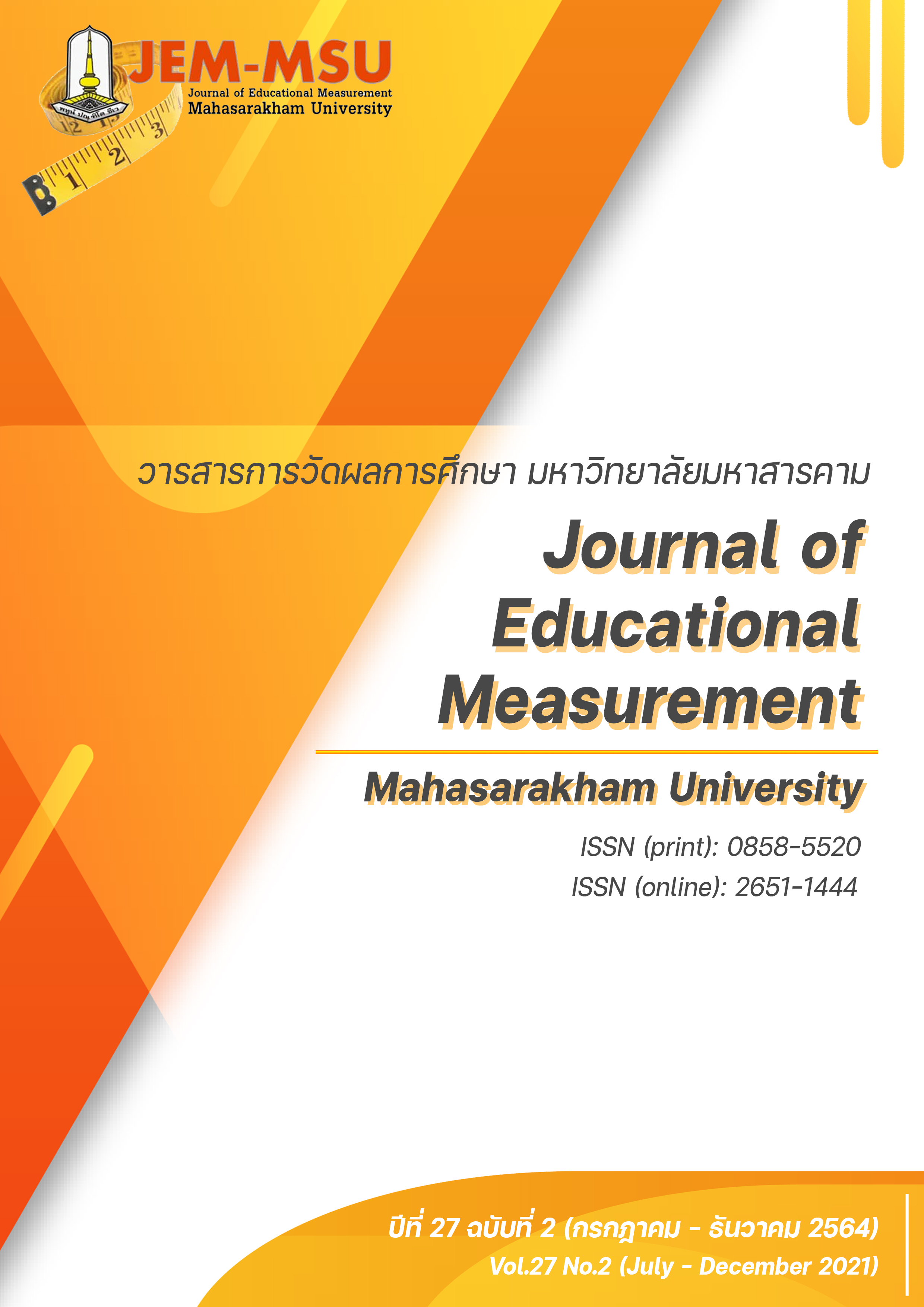The State of Classroom Observation and Teachers’ Feedback: An Analysis Through Elementary School Teachers’ and Students’ Perspectives
Main Article Content
Abstract
Teachers’ classroom observation and giving feedback competencies facilitate students’ attributes to successfully achieve their educational goals. This qualitative research aimed to analyze the state of teachers’ classroom observation and giving feedback. The data were collected from elementary school teachers and students, using various interview techniques. Data analysis employed content analysis.
The results revealed that there were three domains of the teachers’ observation: 1) the cognitive domain, consisting of accurate understanding and misunderstanding; 2) the affective domain, consisting of positive and negative emotions; and 3) the behavioral domain, consisting of facilitating and discouraging behaviors. The majority of the teachers focused on the cognitive domain and discouraging behaviors. Moreover, there were certain students’ behaviors that teachers often overlooked such as doing non-academic activities under the desks, working on assignments that belonged to other subjects, and bullying their peers. In terms of giving feedback, teachers’ methods of giving feedback could be divided into three categories: 1) giving general feedback, 2) giving positive feedback, and 3) giving negative feedback. In the teachers’ perspectives, the problems that occurred when giving feedback included students’ disobedience and failures in communication between teachers and students. In the students’ perspectives, problems that occurred when receiving teachers’ feedback included impractical advice and excessive punishment.
Article Details
The content and information contained in the published article in the Journal of Educational Measurement Mahasarakham University represent the opinions and responsibilities of the authors directly. The editorial board of the journal is not necessarily in agreement with or responsible for any of the content.
The articles, data, content, images, etc. that have been published in the Journal of Educational Measurement Mahasarakham University are copyrighted by the journal. If any individual or organization wishes to reproduce or perform any actions involving the entirety or any part of the content, they must obtain written permission from the Journal of Educational Measurement Mahasarakham University.
References
กติกร กมลรัตนสมบัติ. (2557). ผลการให้ข้อมูลป้อนกลับจากแบบสอบอัตนัยประยุกต์ที่มีต่อพัฒนาการความสามารถในการแก้ปัญหาทางคณิตศาสตร์ของนักเรียนระดับมัธยมศึกษา. (วิทยานิพนธ์ปริญญามหาบัณฑิต). สืบค้นจาก http://cuir.car.chula.ac.th/handle/123456789/50593
อนงค์ เมธีพิทักษ์ธรรม และกมลวรรณ ตังธนกานท์. (2555). ผลของรูปแบบการให้ข้อมูลป้อนกลับที่แตกต่างกันที่มีต่อความสามารถในการแก้ปัญหาทางคณิตศาสตร์ของผู้เรียนระดับชั้นมัธยมศึกษาปีที่ 1. วารสารอิเล็กทรอนิกส์ทางการศึกษา, 8(1), 2061-2074.
Auld, R. G., Belfore, P. J., & Scheeler, M. C. (2010). Increasing Pre-service Teachers’ Use of Differential Reinforcement: Effects of Performance Feedback on Consequences for Student Behavior. Journal of behavioral education, 19, 169-183. doi 10.1007/s10864-010-9107-4
Chaffee, R. K., Briesch, A. M., Johnson, A. H., & Volpe, R. J. (2017). A meta-analysis of class-wide Interventions for supporting student behavior. School Psychology Review, 46(2), 149–164. doi: 10.17105/SPR-2017-0015.V46-2
Ion, G., Sánchez Martí, A., & Morell, I. A. (2019). Giving or receiving feedback: Which is more beneficial to students' learning? Assessment & Evaluation in Higher Education, 44(1),124 – 138. https://doi.org/10.1080/02602938.2018.1484881
Jacobs, V. R., Lamb, L. L. C., & Philipp, R. A. (2010). Professional noticing of children's mathematical thinking. Journal for Research in Mathematics Education, 41(2), 169–202.
Nastasi, B. K., & Schensul, S. L. (2005). Contributions of qualitative research to the validity of intervention research, Journal of School Psychology, 43(3), 177-195.
O'Connor, E. E., Dearing, E., & Collins, B. A. (2011). Teacher-child relationship and behavior problem trajectories in elementary school. American Educational Research Journal, 48(1), 120–162. doi: 10.3102/0002831210365008
Orsmond, P., & Merry, S. (2011). Feedback alignment: effective and ineffective links between tutors’ and students’ understanding of coursework feedback. Assessment & Evaluation in Higher Education, 36(2), 125-136 doi: 10.1080/02602930903201651
Schack, E. O., Fisher, M. H., Wilhelm, J. (2017). Teacher noticing: Bridging and Broadening perspectives, contexts, and frameworks. New York, NY: Springer International.
Schäfer, S. & Seidel, T. (2015). Noticing and reasoning of teaching and learning components by pre-service teachers, Journal for Educational Research Online, 7(2), 34-58.
Sun, R. C. F. & Shek, S. T. L. (2012). Classroom misbehavior in the eyes of students: A qualitative study. The Scientific World Journal, 2012. 1-8. doi: 10.1100/2012/398482
Van Es, E. A., & Sherin, M. G. (2002). Learning to notice: Scaffolding new teachers' interpretations of classroom interactions, Journal of Technology and Teacher Education, 10, 571-596.


